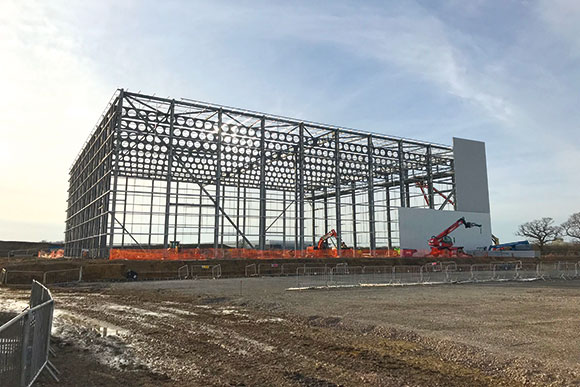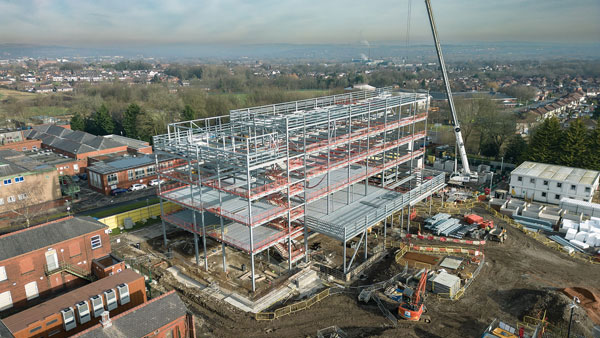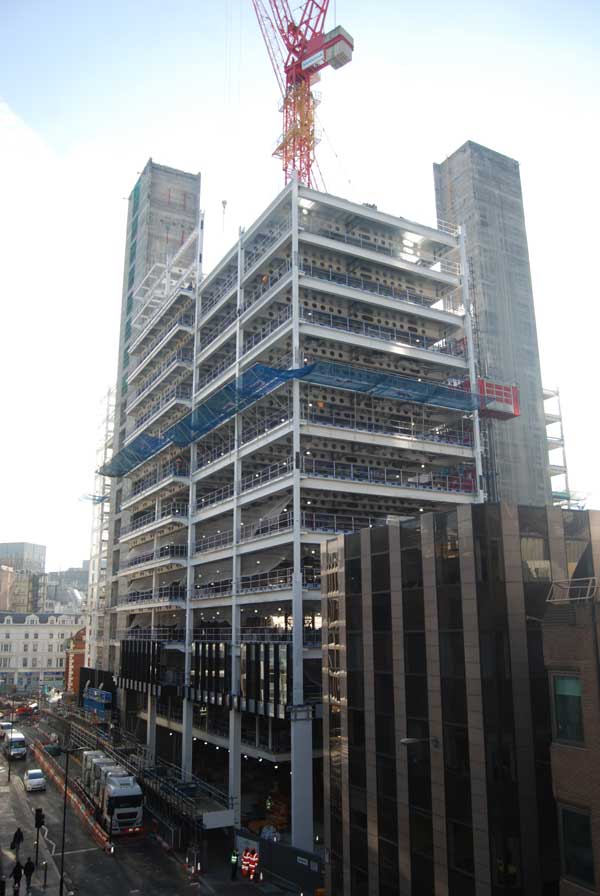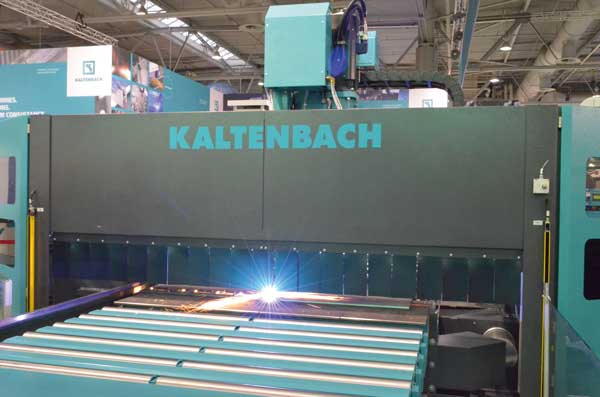Projects and Features
Innovations for fabrication
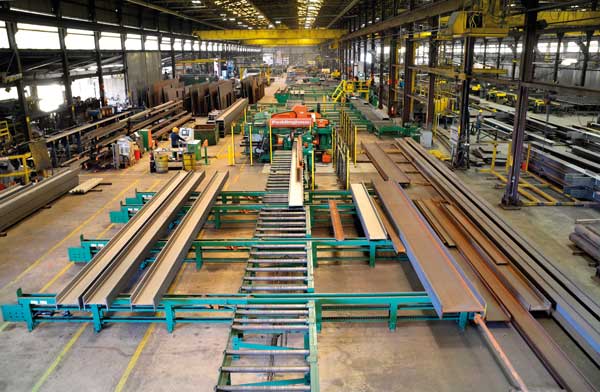 Manufacturers of steel fabrication equipment have invested heavily in research and development to deliver technological advances.
Manufacturers of steel fabrication equipment have invested heavily in research and development to deliver technological advances.
Today’s fabrication equipment is easier to use offering increased productivity, closer integration and higher throughput.
Most notable has been the push towards fully automated equipment to reduce reliance on manual operations, improve output and reduce labour.
Manufacturers of steel fabrication equipment work closely with steelwork contractors planning the workshop design and layout with real time simulation to find the best flow of material and maximise production based on required output through the use of advanced simulation software.
CNC Machinery
To maximize the efficiency of CNC machinery it is best to specify: single end cuts, arranged square to the member length, eliminating set up time needed when changing to another angle or cut; one hole diameter on any one piece, which avoids the need for drill bit changes; and alignment of holes on an axis square to the member length, holes in webs and flanges aligned, reducing the need to move the member between drilling operations.Computer Numerically Controlled (CNC) machinery is the standard today and is integrated into each stage of the steel fabrication process. The process may vary between each steelwork contractor but will generally commence with the efficient and seamless transfer of 3D model information from the design office to the equipment in the workshop.
“Prior to CNC and automated advancements, manual methods were limiting, laborious, costly and less accurate. With the introduction of newer fabricating machinery, firms can now produce more with the same size workforce. Increased productivity, accuracy and versatility with lower overhead costs and labour make the investments in technology appealing to any size of fabricator,” says Peddinghaus Corporation Marketing Communications Specialist Lindy Casey.
Once the 3D model and the steel are received in the workshop, if the steel hasn’t already been shot blasted by the steel stockholder, the first process includes shot blasting for the clean preparation of steel. Manufacturers have refined this equipment to better manage the mix of particles for optimum surface preparation, increase speed and incorporate energy saving measures.
Next comes plate processing, followed by sawing and drilling.
Drilling machines are an essential item for the steel fabrication sector. Advancements have resulted in automated and semi-automated multi-function machines that cut, drill and mark the steelwork. This includes the automated scribing of fabrication layout marks and weld symbol information, and structural steel beam coping (a cut to allow beam-to-beam connection with the top flanges at the same level).
These processes were previously undertaken manually so advancements that allow many processes to be completed on the one machine deliver greater efficiency and speed to the fabrication process. These machines also reduce the number of people involved in the process and the need to handle the steel, which means manual operations such as turning and repositioning steel are reduced supporting increased workshop safety. These machines also reduce the risk of error and the need for re-work on-site.
Another major advance in drilling machines was the introduction of solid carbide drills which allow much faster cutting speeds and greater force. Solid carbide is also more economical as it enables numerous re-sharpening of the bit.
Like all manufacturing sectors, producers of steel fabricating machinery are not standing still, and new time-saving innovations are on their way as FICEP UK Managing Director Mark Jones explains:
“The next innovation is likely to be the full automation of all processes on the factory floor utilising robots or cobots (collaborative robots) where humans and robots work together with direct interaction in a defined workspace to reduce material handling and welding.
“We anticipate there will be a need to have the virtual factory, which could be managed remotely with any number of workshops under control from a single point.”
If this prediction comes to fruition the skills of the future for steelwork contractors and stockholders alike will be in the programming, operation, development of solutions and integration with software as there will be fewer processes requiring manual intervention.
Sponsors
Manufacturing Equipment
Gold: Ficep UK Ltd, Peddinghaus Corporation
Bronze: Kaltenbach Limited, Voortman Steel Machinery









